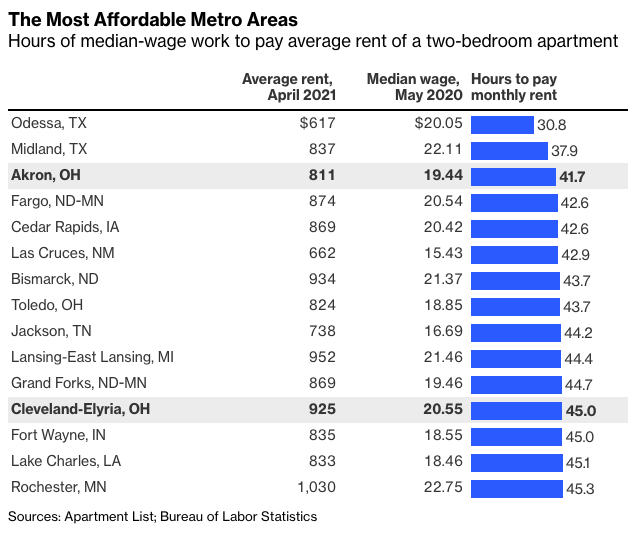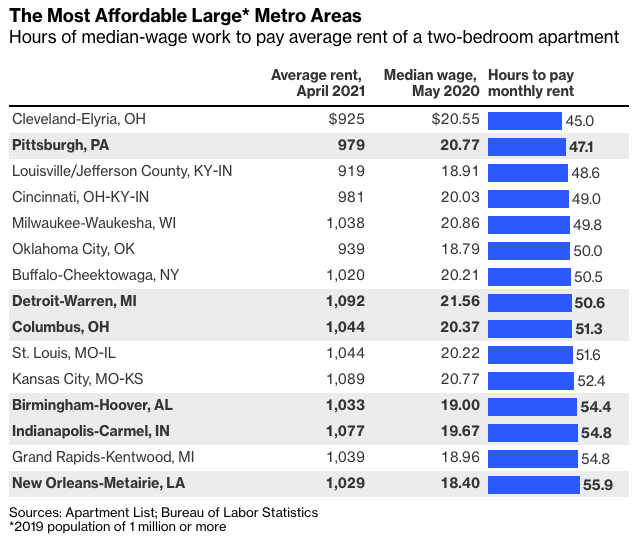To me the standout here is Akron, a leafy, centrally located city of about 200,000 with a lively-ish downtown, a big university and a national park less than 10 miles from both. It’s also part of the same combined statistical area — sort of a mega metro area — as the almost-as-affordable Cleveland, a city that’s gotten tolerably good press ever since the construction of Progressive Field and the Rock and Roll Hall of Fame in the mid-1990s but has managed to keep on shrinking at both the city and metro-area level.
Restrict the ranking to metro areas of a million people or more, and there are a lot of such attractive-seeming cities.
Some of these places are already magnets for skilled younger workers (Pittsburgh, Columbus and Indianapolis stand out, but they’re not the only ones). Others are iconic cities that fell on hard times but have been making a comeback (Detroit and New Orleans). One is my beloved former home (Birmingham). All the ones I’ve spent time in (I’ve yet to visit Milwaukee or Grand Rapids) are pretty nice places to live, and have either excess existing housing or make it easy enough to build that real estate costs aren’t a major hurdle for most residents. I can sort of see why someone with no previous connection to them might not want to pick up and settle there as a remote worker. But for employers trying to navigate the shifting post-pandemic geography of jobs, they may deserve a closer look than they’ve been getting.
Justin Fox is a Bloomberg Opinion columnist covering business. He was the editorial director of Harvard Business Review and wrote for Time, Fortune and American Banker. He is the author of The Myth of the Rational Market.

Covid Has Made Orlando Less Affordable Than San Francisco
May 6, 2021
« Previous Article
| Next Article »
Login in order to post a comment








